52.3 degree Celsius is a climatic anomaly and a threat to health: How to stay safe | – Times of India
At 52.3 degree Celsius, Delhi breaks its own record and has witnessed the highest temperature ever recorded during summer. According to Kuldeep Srivastava, Head, Regional Weather Forecasting Centre, the highest temperature of this season was recorded today in the Mungeshpur area of North Western Delhi at 52.3 degrees at the automatic weather station.
The India Meteorological Department (IMD) has been issuing a red alert for Delhi and several states in north India for intense heat waves for several days now and today the temperature has climbed several notches in the last 24 hours.
52.3 degree Celsius is at least 7.3 degrees higher than the normal temperature of Delhi during summer season. As per the information available on the official website of Delhi Tourism, “Delhi has an extreme climate. It is very hot in summer (April – July) and cold in winter (December – January). The average temperature can vary from 25 degree celsius to 45 degree celsius during the summer and 22 degree celsius to 5 degree celsius during the winter.”
Delhi is getting hotter year by year
Explaining the reason behind the rising mercury, IMD regional head Kuldeep Srivastava told PTI that the city’s outskirts are the first areas to be hit by hot winds from Rajasthan.
“Parts of Delhi are particularly susceptible to the early arrival of these hot winds, worsening the already severe weather. Areas like Mungeshpur, Narela and Najafgarh are the first to experience the full force of these hot winds,” he said.
IMD issues red alert for Delhi, Rajasthan, other states: What it means and how it can affect health
Mahesh Palawat, the vice president of Meteorology and Climate Change at Skymet Weather, said, “In open areas with vacant land, there is increased radiation. Direct sunlight and lack of shade make these regions exceptionally hot.” “When wind blows from the west, it affects these areas first. As they are on the outskirts, temperatures rise rapidly,” Palawat added.
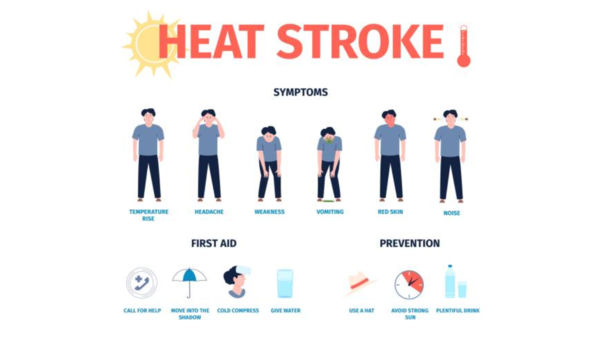
Is the data accurate?
“The maximum temperature over Delhi NCR varied from 45.2° to 49.1°C in different parts of city, Mungeshpur reported 52.9°C as an outlier compared to other stations. It could be due to error in the sensor or the local factor. IMD is examining the data and sensors. Temperature over urban areas varies from place to place due to local exposure such as proximity to water bodies, barren land, concrete and dense urban cluster, green areas etc. IMD has five major stations regularly reporting observations since long period and they are referred to as climate stations,” the IMD has said.
Vitamin D deficiency, high blood pressure, and other health conditions that can increase the risk of heatstroke
“It is not official yet. Temperature of 52.3°C in Delhi is very unlikely. Our senior officials in IMD have been asked to verify the news report. The official position will be stated soon,” Union Minister Kiren Rijiju had tweeted on X about the record breaking temperature of Delhi.
From headache to cardiovascular strain: High temperatures put a severe threat on human health
Temperatures soaring above 50°C (122°F) are not just a climatic anomaly; they represent a severe threat to human health, infrastructure, and societal functioning. While extreme heat events are becoming more common due to global climate change, understanding their multifaceted impacts is crucial for preparedness and mitigation.
Health impacts
Extreme temperatures can overwhelm the body’s ability to regulate heat, leading to heat exhaustion and potentially fatal heatstroke. Symptoms include heavy sweating, headache, weakness, dizziness, nausea, confusion, and unconsciousness. Without prompt medical intervention, heatstroke can cause permanent organ damage and death. High temperatures increase the rate of perspiration, leading to significant fluid loss. If not replenished, this can result in severe dehydration, characterized by dry mouth, lethargy, rapid heartbeat, and in severe cases, shock and organ failure.
Extreme heat puts additional strain on the cardiovascular system as the body works harder to maintain a stable internal temperature. This can trigger heart attacks, strokes, and other cardiovascular events, particularly in those with preexisting conditions. Air quality tends to deteriorate during heat waves due to increased levels of ground-level ozone and particulate matter. This can exacerbate respiratory conditions like asthma, chronic obstructive pulmonary disease (COPD), and other lung diseases.
Prolonged exposure to extreme heat can lead to increased irritability, anxiety, and depression. High temperatures can also disrupt sleep patterns, contributing to mental fatigue and cognitive impairment.
Elderly and children are particularly susceptible to heat-related illnesses due to their limited ability to regulate body temperature and greater dependency. People with limited access to air conditioning, adequate housing, and healthcare are disproportionately affected by extreme heat. These communities often lack the resources to effectively mitigate the impacts of heatwaves.
At 52.3 degree Celsius, daily life is affected to an unseen extent
The need for air conditioning and cooling systems spikes during extreme heat, leading to higher electricity consumption. This can strain power grids, resulting in blackouts or power cuts, further exacerbating the situation by leaving people without cooling mechanisms. Extreme heat can damage infrastructure, including roads, railways, and bridges.
The demand for water increases significantly as people consume more fluids and use water for cooling purposes. This can strain municipal water supplies, leading to shortages and rationing. High temperatures can also lead to the proliferation of harmful algae and bacteria in water bodies, affecting water quality and posing health risks.
Extreme heat can damage crops, reduce yields, and even cause crop failure. Heat stress affects the growth and development of plants, leading to reduced agricultural productivity and food shortages. Livestock are also vulnerable to extreme heat, which can cause heat stress, reduce fertility, and increase mortality rates.
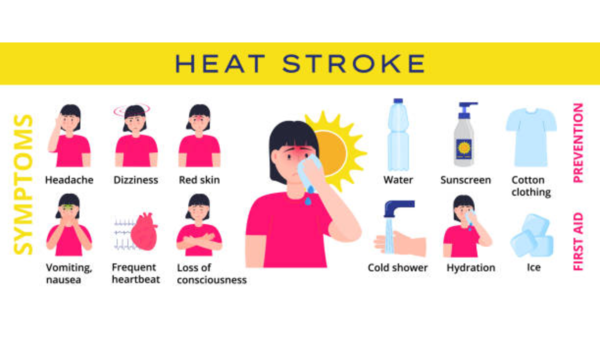
Let’s bring back ancient practices to never see this temperature again!
Throughout history, humans have developed various strategies to cope with high temperatures, long before the advent of modern air conditioning and electric fans. These ancient practices, rooted in observation and necessity, offer valuable insights into sustainable and natural ways to stay cool.
Thick walls, high ceilings in homes
Ancient structures often featured thick walls and high ceilings to regulate indoor temperatures. Thick walls made of materials like adobe, stone, or mud bricks provide excellent thermal mass, absorbing heat during the day and releasing it slowly at night. High ceilings allow hot air to rise, keeping living spaces cooler.
Traditional homes in hot climates often included central courtyards. These open spaces promote ventilation, allowing cool air to circulate and hot air to escape. Courtyards also create shaded areas, reducing the overall temperature within the house.
Wind towers, or badgirs, which are a notable feature in Persian architecture were built to catch the wind at higher altitudes and funnel it down into the building, providing natural ventilation and cooling. This passive cooling technique can significantly lower indoor temperatures without the need for electricity.
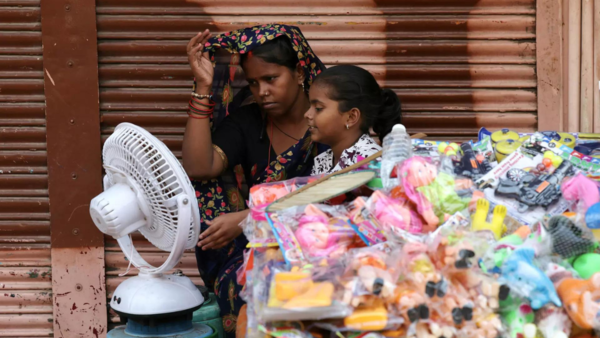
Fountains and pools to cool the air
Incorporating water features such as fountains, pools, and ponds into living spaces can help cool the air. As water evaporates, it absorbs heat from the surroundings, creating a cooling effect. Ancient palaces and homes in regions like the Middle East and India often featured elaborate water systems to maintain a cooler environment.
Techniques such as hanging wet cloths or using clay pots filled with water can help cool indoor spaces. The evaporation process absorbs heat, reducing the temperature. This method is still used in many parts of the world and can be highly effective in dry climates.
Green vegetation and shading
Trees and vines provide natural shade and cool the air through transpiration. Ancient civilizations, such as the Greeks and Romans, planted trees around homes and public spaces to create shaded, cooler areas. Trees like figs, dates, and olives were commonly used.
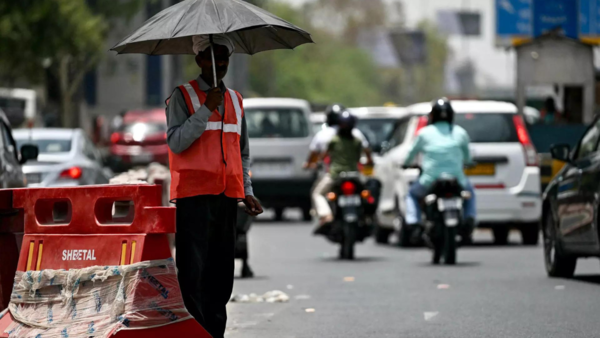
(Image: AFP)
Growing plants on rooftops and walls can reduce the heat absorbed by buildings. This practice, known as green roofing, was used by ancient cultures like the Babylonians, who built the famous Hanging Gardens. Green roofs and walls provide insulation and reduce the urban heat island effect.
Clothing and personal habits to help you stay cool
Wearing lightweight, loose-fitting clothing made from natural fibers like cotton and linen helps keep the body cool. These materials allow air circulation and wick away sweat, promoting evaporation and cooling. Traditional garments in hot climates, such as the Indian sari or Middle Eastern clothes, are designed for optimal comfort in high temperatures.
Count on hydration in everything that you consume
Consuming foods with high water content, such as fruits and vegetables, helps maintain hydration. Ancient diets in hot climates often included melons, cucumbers, and citrus fruits. Additionally, drinking herbal infusions like mint tea can have a cooling effect on the body.
Replenishing electrolytes lost through sweating is crucial. Ancient civilizations used natural sources of salt, such as sea salt and salted foods, to maintain electrolyte balance. In India, traditional beverages like buttermilk and lassi (yogurt drink) provide hydration and essential minerals.
Japanese trend, Uchimizu can help the environment cool down
Uchimizu is a traditional Japanese practice of sprinkling water on streets, gardens, and other outdoor areas to cool the environment. This simple yet effective method has been used for centuries in Japan to combat the intense summer heat. The practice not only helps in lowering temperatures but also has several environmental and social benefits. As urban areas worldwide face increasing heat due to climate change and the urban heat island effect, Uchimizu offers a sustainable, low-tech solution to help cool down cities.
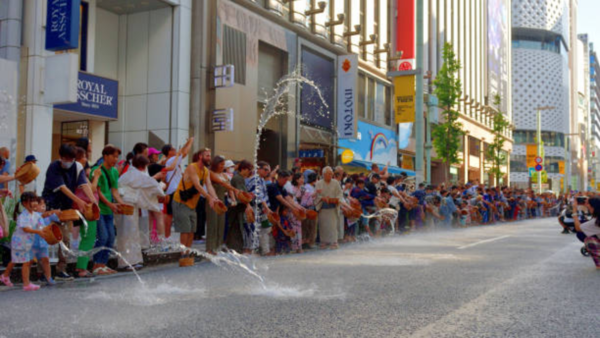
Uchimizu works primarily through the principle of evaporative cooling. When water is sprinkled on hot surfaces, it absorbs heat from the environment to evaporate. This process lowers the temperature of the surfaces and the surrounding air.
How to keep eyes healthy and disease free in summer
Different materials absorb and retain heat at different rates. Urban environments are often covered in asphalt and concrete, which absorb a lot of heat. By sprinkling water on these surfaces, Uchimizu can temporarily reduce the amount of heat they retain.
This reduction in surface temperature contributes to lowering the overall microclimate temperature, creating cooler pockets within the urban landscape.
Cities often experience higher temperatures than their rural surroundings due to human activities and the extensive use of heat-absorbing materials. This phenomenon is known as the urban heat island effect. Regular application of Uchimizu in key areas can create cooler zones, reducing the overall temperature in densely populated urban regions.
Traditionally, Uchimizu uses leftover water from daily activities, such as bathwater or rainwater collected in cisterns. This practice promotes water conservation by making use of water that would otherwise go to waste. Instead of relying on energy-intensive air conditioning systems, Uchimizu provides a low-cost and environmentally friendly method to achieve localized cooling.
Other ways it can help
Sprinkling water helps settle dust and particulate matter in the air, leading to improved air quality. This can be particularly beneficial in urban areas with high levels of pollution. Adding moisture to the air can also reduce the concentration of airborne pollutants, further enhancing air quality.
Uchimizu is often practiced as a community activity, where neighbors come together to sprinkle water in their shared spaces. This fosters a sense of community and collective responsibility for the environment.
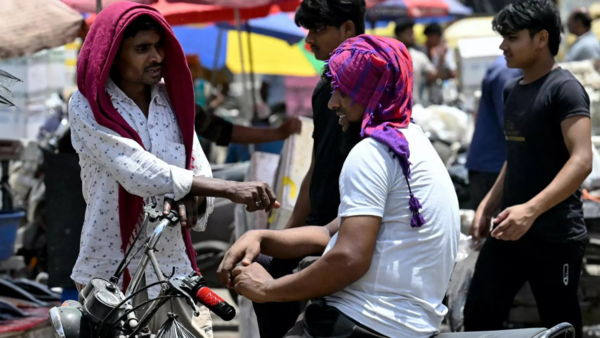
(Image: AFP)
Modern urban planning can incorporate Uchimizu by designing spaces that facilitate the practice. For example, creating areas with permeable surfaces that can absorb and utilize sprinkled water effectively. Combining Uchimizu with green infrastructure, such as green roofs and walls, can enhance its cooling effects. Vegetation can further cool the environment through transpiration.
In a nutshell, prevent heat waves as it can worsen your health and leave a long lasting impact. Here are a few effective tips to beat the heat wave:
- Drink plenty of water throughout the day. Avoid alcohol, caffeine, and sugary drinks, as they can dehydrate you.
- Choose lightweight, loose-fitting, and light-colored clothing. Wide-brimmed hats and sunglasses can also help protect you from the sun.
- Avoid being outdoors during peak sunlight hours (10 a.m. to 4 p.m.). Seek shade whenever possible.
- Apply a broad-spectrum sunscreen with at least SPF 30 to protect your skin from harmful UV rays.
- Spend time in air-conditioned or shaded areas. Use fans or cooling towels if you don’t have access to air conditioning.
- Reduce, reschedule, or cancel strenuous outdoor activities, especially during the hottest part of the day.
- Symptoms include high body temperature, red, hot, and dry skin, rapid pulse, headache, dizziness, nausea, confusion, and unconsciousness. Seek immediate medical attention if these occur.
- Ensure that elderly, children, and those with medical conditions are staying cool and hydrated.




